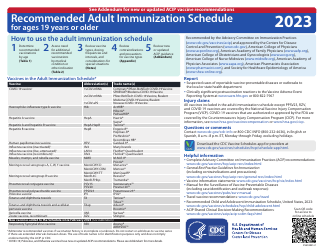Choices for Mobility Independence: Transportation Resources for Older Adults
Choices for Mobility Independence: Transportation Resources for Older Adults is a 6-page legal document that was released by the U.S. Department of Health and Human Services and used nation-wide.
FAQ
Q: What is the document about?
A: The document is about transportation resources for older adults to help them maintain mobility independence.
Q: Who is the target audience of the document?
A: The target audience of the document is older adults.
Q: Why is mobility independence important for older adults?
A: Mobility independence is important for older adults as it allows them to maintain their freedom and stay connected with their community.
Q: What are transportation resources?
A: Transportation resources are services and options available to help older adults get around, such as public transportation, paratransit, and community transportation programs.
Q: What are some examples of transportation resources?
A: Examples of transportation resources include buses, trains, taxis, ridesharing services, and volunteer driver programs.
Q: What is paratransit?
A: Paratransit is a transportation service specifically designed for people with disabilities or mobility limitations.
Q: What are community transportation programs?
A: Community transportation programs are local initiatives that provide transportation services to older adults and individuals with limited mobility.
Q: How can older adults access transportation resources?
A: Older adults can access transportation resources by contacting local transportation agencies, senior centers, or community organizations.
Q: What should older adults consider when choosing transportation resources?
A: When choosing transportation resources, older adults should consider factors such as cost, accessibility, convenience, and the availability of door-to-door service.
Q: Are there any financial assistance programs available for transportation?
A: Yes, there are various financial assistance programs available for transportation, such as reduced fares, subsidies, and vouchers for low-income individuals.
Q: How can older adults stay informed about transportation options?
A: Older adults can stay informed about transportation options by signing up for newsletters, attending community events, and contacting local transportation agencies for information.
Q: Are there any alternatives to traditional transportation for older adults?
A: Yes, there are alternatives to traditional transportation for older adults, such as walking, cycling, or using mobility aids like scooters or wheelchairs.
Q: What are some safety tips for older adults using transportation?
A: Some safety tips for older adults using transportation include wearing seatbelts, using handrails, being aware of surroundings, and reporting any concerns to the transportation provider.
Q: Can family members or caregivers assist older adults with transportation?
A: Yes, family members or caregivers can assist older adults with transportation by helping them navigate transportation options, accompanying them on trips, or driving them to locations.
Form Details:
- The latest edition currently provided by the U.S. Department of Health and Human Services;
- Ready to use and print;
- Easy to customize;
- Compatible with most PDF-viewing applications;
- Fill out the form in our online filing application.
Download a printable version of the form by clicking the link below or browse more legal forms and templates provided by the issuing department.














